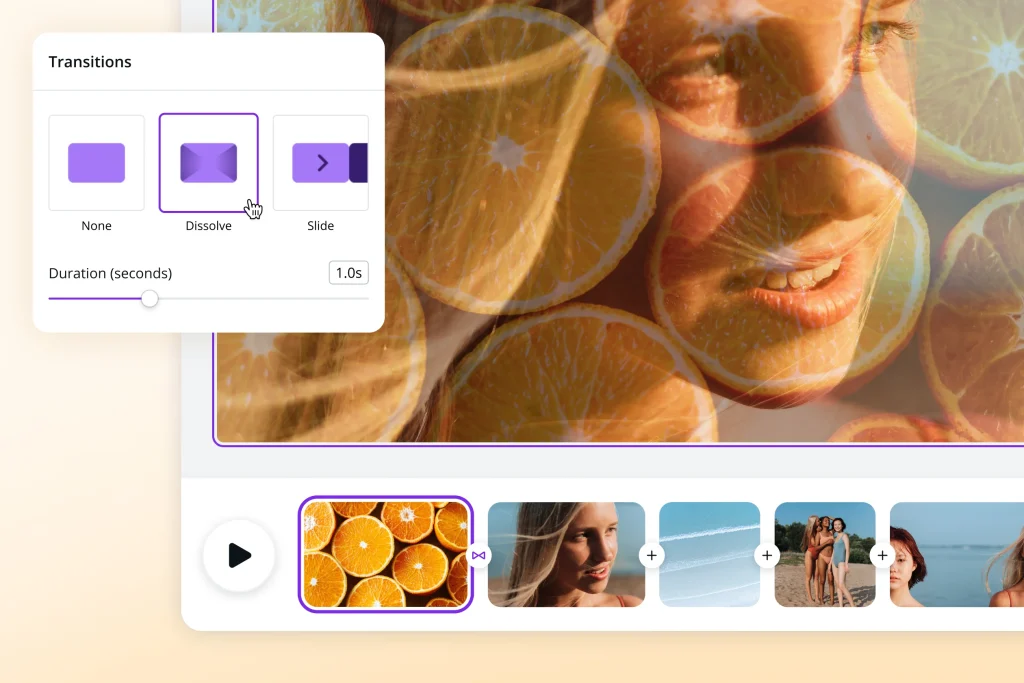Have you ever watched a video that felt effortlessly smooth — every scene blending perfectly into the next? That magic doesn’t just happen by accident. It’s the result of well-chosen video transition effects.
Whether you’re creating a YouTube vlog, a travel montage, a cinematic short film, or a TikTok edit, transitions are what give your videos rhythm and flow. Let’s dive deep into what they are, why they’re so important, and how you can use them to take your videos from ordinary to unforgettable.
What Are Video Transition Effects?

In simple words, video transition effects are visual techniques used to smoothly move from one scene or clip to another. Instead of jumping abruptly, a transition gives the viewer’s eyes time to adjust — creating a more polished and professional viewing experience.
You’ve probably noticed transitions without realizing it:
- The screen fades to black at the end of a movie.
- A travel clip zooms into the next destination.
- A music video flashes or spins between scenes.
Those are all video transition effects — small but mighty tools that shape how your story feels.
Why Are Video Transition Effects So Important?
Think of transitions as the glue that holds your video together. Without them, even great clips can feel disconnected or rushed. With them, your video becomes smoother, more emotional, and easier to follow.
Here’s why transitions matter:
- They improve flow – Smooth transitions make your video feel like one continuous story rather than a collection of random clips.
- They build emotion – A slow fade creates calm, while a whip pan adds excitement. Transitions help control how your audience feels.
- They highlight storytelling moments – You can show the passage of time, a change in location, or even a flashback just through the right transition.
- They boost professionalism – Even a simple video looks more polished when transitions are used correctly.
So, if you want your audience to stay hooked — transitions are your best friend.
Most Popular Types of Video Transition Effects

There are dozens of transitions out there, but some are timeless classics while others add trendy, creative energy. Let’s go over the most common and effective video transition effects:
1. Fade In and Fade Out
One of the simplest and oldest transitions, this effect gradually darkens or brightens the scene. It’s often used to signal the start or end of a video, or to suggest that time has passed.
Perfect for: emotional videos, intros, and cinematic storytelling.
2. Cross Dissolve (or Fade Transition)
This effect blends one clip into another, allowing them to overlap for a few seconds. It creates a smooth and seamless feel, ideal for soft, emotional moments.
Perfect for: weddings, romantic scenes, or reflective content.
3. Wipe
A wipe transition replaces one clip with another as it “slides” across the screen — either horizontally, vertically, or diagonally.
Perfect for: travel vlogs or energetic montages where you want movement and fun.
4. Zoom or Whip Pan
These trendy transitions zoom in or quickly pan the camera to move between scenes. They add motion and excitement, making them popular for fast-paced edits.
Perfect for: YouTube videos, reels, and adventure content.
5. Glitch Transition
This one mimics a digital error or distortion, giving your video a futuristic or tech-inspired feel.
Perfect for: gaming, tech, or modern content.
6. Spin or Flip
The next scene appears as the screen spins or flips — a fun, dynamic way to move between clips.
Perfect for: lifestyle or dance videos that need a playful vibe.
7. Light Leak Transition
Soft flashes of light fade between scenes, giving a dreamy, cinematic look.
Perfect for: wedding videos, nature montages, or nostalgic edits.
8. Blur Transition
This effect adds a short blur as one clip changes to the next, keeping focus on the flow rather than the switch.
Perfect for: professional presentations or aesthetic vlogs.
You may also like it:
Ayra Fitness Zone – Best Gym For Health & Wellness Goals
Learn Mobile Editing With Aditya Editz – Tips & Tutorials
Lightroom Presets HD – Sharpen Your Photos Like A Pro
Lightroom APK Mod Download – Unlock Premium Features Free
When (and When Not) to Use Transitions
While transitions can make your video shine, overusing them can ruin the effect. Here’s the rule: use them with purpose.
✅ Use transitions when:
- You’re changing locations or timeframes.
- You want to enhance emotion or mood.
- You’re editing creative or high-energy content.
❌ Avoid transitions when:
- You’re creating serious or news-style videos.
- The clip naturally flows without needing one.
- You find yourself using too many — simplicity often looks cleaner.
Remember: the best transitions are the ones the viewer doesn’t notice.
Best Software for Adding Video Transition Effects
The good news is, you don’t need to be a professional editor to use transitions. Most video editing apps include them by default. Here are a few popular options:
- CapCut – Free and mobile-friendly, great for quick edits.
- Adobe Premiere Pro – Professional-grade software with customizable transitions.
- Final Cut Pro – Powerful for Mac users with cinematic options.
- DaVinci Resolve – A free yet advanced editor with stunning visual tools.
- Filmora – Simple drag-and-drop interface perfect for beginners.
All of these allow you to explore hundreds of built-in video transition effects and even create your own unique styles.
Pro Tips for Using Video Transition Effects Like a Pro
If you want your transitions to feel seamless and natural, keep these tips in mind:
- Match the transition to your mood. A sad montage might need a slow fade, while a travel vlog might shine with a whip pan.
- Keep timing in mind. Don’t make transitions too long or too short — they should complement the rhythm of your video.
- Use sound effects. A “whoosh” or “swoosh” can make your transitions feel more immersive.
- Stay consistent. Stick to a few transition styles for the entire video to maintain a cohesive look.
- Watch professionals. Study music videos, short films, or YouTube creators to see how they use transitions naturally.
Final Thoughts
At the end of the day, video transition effects are what turn a simple video into a visual story. They control pacing, emotion, and flow — and when used wisely, they can completely transform your viewer’s experience.
Start experimenting with different transitions today. Try fades, zooms, and dissolves to see what fits your style. The more you practice, the better your storytelling will become — and soon, your videos will not only look professional but feel unforgettable.
FAQs About Video Transition Effects
1. What are video transition effects in editing?
Video transition effects are visual tools used to smoothly move between two clips in a video. They make the shift from one scene to another look seamless and professional, improving the viewer’s experience.
2. Why are video transitions important in a video?
They help maintain flow, set the tone, and add creativity. Without transitions, videos can look abrupt or disjointed. With them, every scene feels connected and engaging.
3. Which are the most popular video transition effects?
Some of the most common effects include fade in/out, cross dissolve, zoom, glitch, spin, blur, and light leak transitions. Each one creates a different mood and can fit various video styles.
4. Can beginners use video transition effects easily?
Absolutely! Tools like CapCut, Filmora, or DaVinci Resolve make adding transitions simple with drag-and-drop features — perfect for beginners or social media creators.
5. How many transitions should I use in one video?
There’s no fixed number, but the golden rule is “less is more.” Use transitions only where they enhance the story — not in every clip. Overusing them can make your video feel cluttered.
